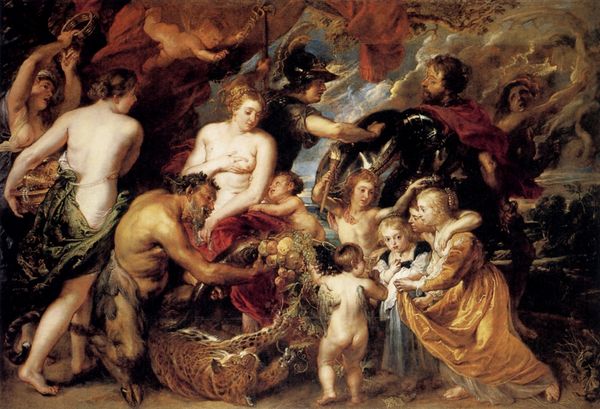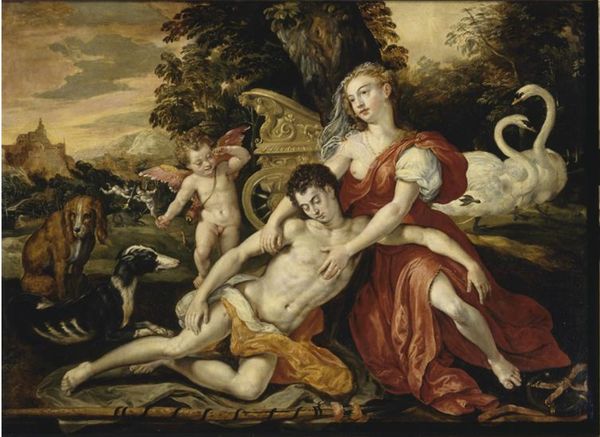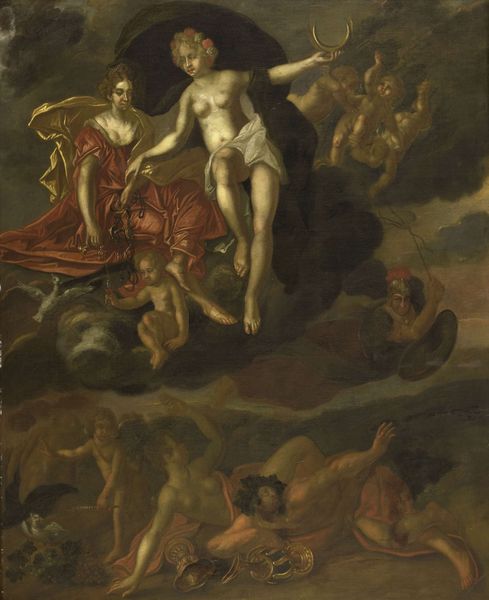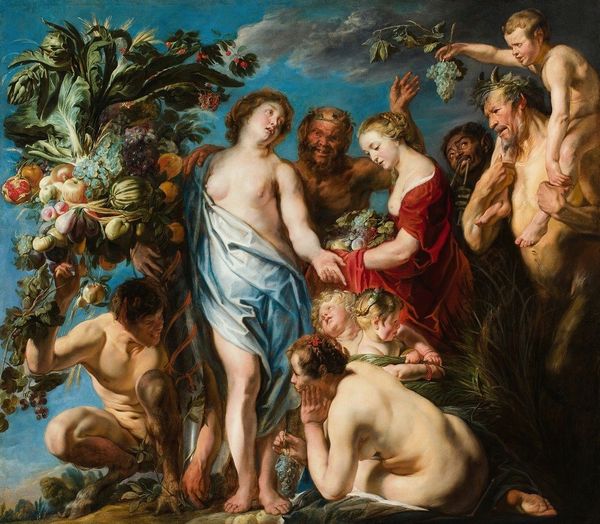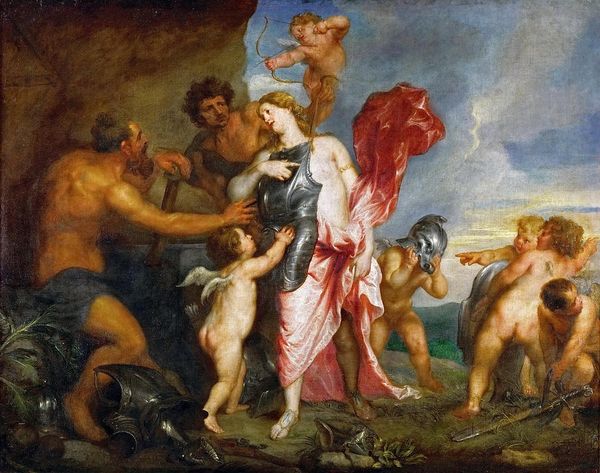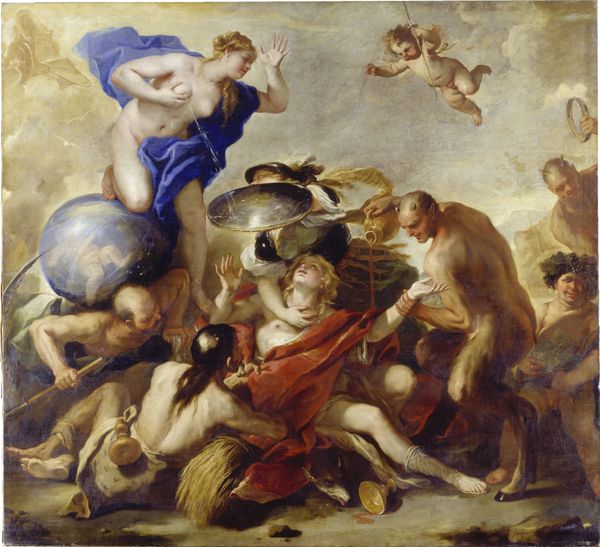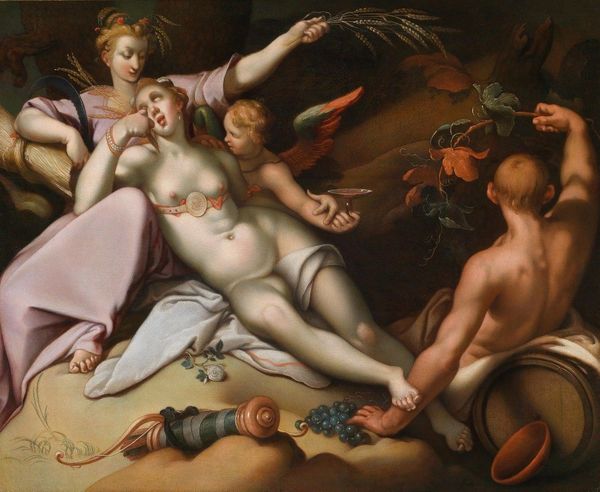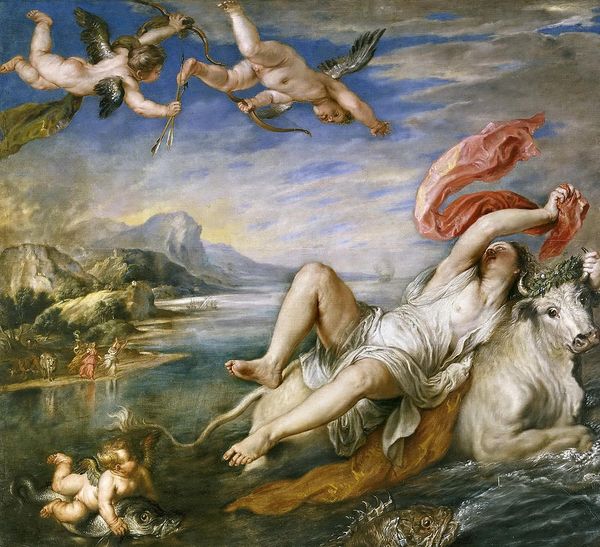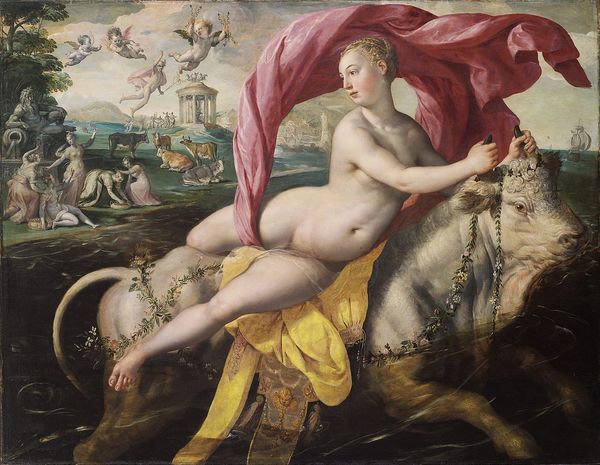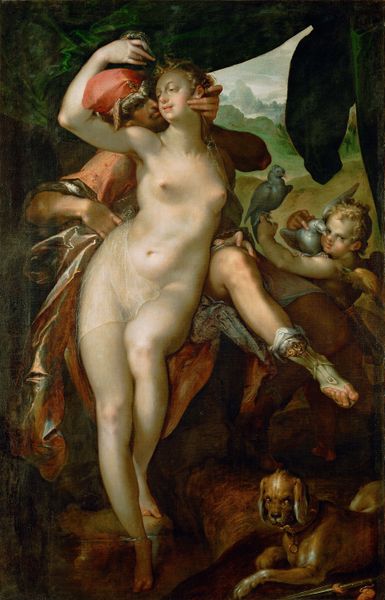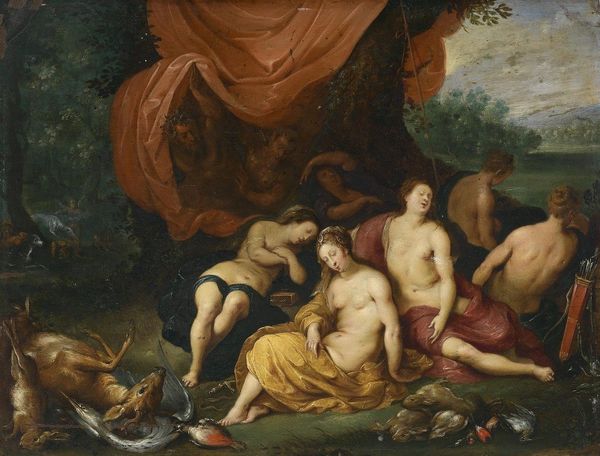
painting, oil-paint
#
allegory
#
painting
#
oil-paint
#
mannerism
#
figuration
#
oil painting
#
flemish
#
mythology
#
history-painting
#
nude
Copyright: Public domain
Curator: Right, let's take a look at "Abundance" by Maarten de Vos, an oil painting from 1584. It really throws everything at you, doesn't it? Editor: My first impression is…overflowing. It's visually very rich. Is it just me, or is there a sense of…uncontrolled profusion? All those chubby cherubs, fruits, animals...It’s almost too much. Curator: I agree, there's a deliberate excess, and that’s very typical of the Mannerist style, a real pushing against the Renaissance ideal of balanced beauty. De Vos packs the canvas! Think about the sheer labor invested in rendering each texture. The smooth skin, the sheen on the fruit. He revels in material abundance itself, almost fetishistically. Editor: Absolutely. Look how those cornucopias, just brimming with bounty, seem to emphasize earth's and female productivity and nourishment! It feels allegorical, the way it's layered in mythological tropes and a glorification of earth and womanhood. The naked figures add to the symbolism. Curator: It’s very much a history painting aiming at universal themes. This work reflects the values and beliefs in prosperity and fertility that society esteemed. How that "prosperity" was distributed in the late 16th century, well, that's another matter! De Vos has likely captured his patron’s dreams. All this oil paint to create an illusion! Editor: The detail definitely serves that function. It’s beautiful but also telling. Consider how wealth disparity informs the entire composition, or maybe more accurately, how that anxiety finds an oblique route of expression! Curator: Perhaps we could imagine this "Abundance" as a product of trade routes and the availability of those exotic fruits. Even those pigments...Where do they come from? How were they made, distributed? Editor: It's definitely tempting to deconstruct the myth, peeling back the layers of varnish and symbolism to reveal the processes, the labor, even the exploitation embedded within the making of the artwork itself. Curator: For me, the painting ultimately celebrates something almost childlike in us, this innocent embrace of a fertile world. It pulls me in even as it slightly overwhelms. Editor: For me it’s a reminder to interrogate visual splendor.
Comments
No comments
Be the first to comment and join the conversation on the ultimate creative platform.
